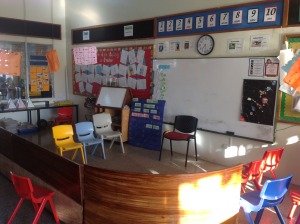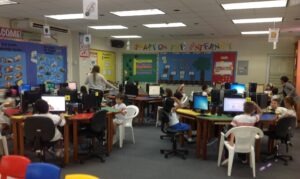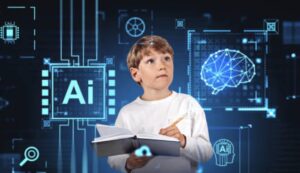
Education and technology have always been strongly related. This is demonstrated by the many technologies, old and new, that are used in classrooms everyday by teachers and students alike. In her book, Teaching as a Design Science, Dana Laurillard makes the interesting observation that education does not drive technological invention. Instead, education tends to be beholden to the inventiveness of other fields such as business and leisure. There are now a wide array of different “educational” technologies available (laptops, iPads, projectors, etc.), yet very few have their origins specifically within the classroom context.
Appropriate technology in an educational setting should therefore be assessed for its potential to meet educational aims. The full potential of educational technology is only realised when it supports creativity and critical thinking. In order to better understand how to evaluate the appropriateness of educational technology, it is important to identify what educational aims are, what educational technology is and how appropriate educational technology should be defined.
The current definition of educational technology from the Association for Education Communications & Technology (AECT) is as follows: Educational technology is the study and ethical practice of facilitating learning and improving performance by creating, using, and managing appropriate technological processes and resources. The sheer breadth of what form technology can take and how it interacts with the learning environment has important implications for its potential to ‘facilitate learning and improve performance.’ For instance, both a pencil and a laptop can be seen as different types of technologies for use in the classroom. However, this does not mean that either tool is necessarily appropriate for all classrooms or lessons all of the time. What facilitates learning for one context or situation does not necessarily do so for all.
Traditionally, the concept of appropriate technology has been discussed with respect to economic development. The British economist, Shumacher was the first to formerly posit the notion. The criteria for appropriate technology is encapsulated in his book, Small Is Beautiful (1973), in which he states that it should be: (a) simple, (b) small scale, (c) low cost, and (d) non-violent. Although the definition has subsequently been adapted by others, from the educational perspective, it suffices to stick with the original criteria. The rationale underpinning the criteria is that ‘new possibilities are created for people, singly or collectively, to help themselves’ (1980, pp. 57). This certainly ties into what most educators are trying to do, which is to develop independent learners. Irrespective of context or situation, classroom or lesson, the core idea presented by Shumacher is that when it comes to the aim of empowering people by use of appropriate technology, less is more. From a pedagogical standpoint, appropriate technology would imply itself to be easily and non-invasively assimilated into the learning environment of the classroom.
The appropriateness of technology according to Shumacher’s criteria is positively related to the degree of what Mishra & Koelher (2006) have referred to as “transparency”, i.e. the extent to which the technology blends into the environment such that it is not even considered a technology anymore. These technologies, which have become so commonplace such as pens and exercise books, are now rendered as “transparent”. Arguably, this is in contrast to digital technologies for example, which are not as deeply assimilated into the educational system and therefore not as “transparent”. Diana Laurillard (2012, pp. 210) supports such an assertion: ‘the story of digital learning technologies has hardly begun, and there will be no end until they have become so fully embedded in education that we will not even ask the question….(Paper) is now so completely embedded, and it is so diverse in its benefits, that no-one begins to ask how “effective” it is.’ A “transparent” technology then can certainly be seen to meet Shumacher’s criteria. Pedagogically speaking, the greater the transparency (and therefore appropriateness) of educational technology, the greater its effectiveness insofar as facilitating teaching and learning.
Transparency alone, although for the most part a necessary condition, is not a sufficient condition in determining the appropriateness of technology in the classroom setting. Luckin (2006) discusses teaching and learning as taking place within an ‘ecology’ – a dynamic and constantly-evolving interaction between a wide range of resources. She refers to this dynamic as ‘The Learner Centric Ecology of Resources Model’ and argues that such a model helps us to design educational experiences that are relevant to the learner’s needs. Ultimately, this model sets the context in which technologies are used and in part, determines the appropriateness of their use. Most importantly, it shows us that a technology appropriate for one classroom is not necessarily appropriate for another. This is because the model is made up of resources, which include knowledge on the part of the teacher and learner. In the case of interactive whiteboards for example, some teachers are very knowledgeable in how to effectively use this technology, whereas others are not. To this extent, it can be seen that the appropriateness of technology is defined by the user. Mishra and Koelher (2006) refer to a very specific type of knowledge that the teacher needs: Technological Pedagogical Content Knowledge (TPCK), arguing that this complex type of knowledge is required for thoughtful pedagogical uses of technology. As the technology is used more regularly and becomes embedded in the classroom, its “transparency” not only increases to better facilitate the pedagogy, but the technology itself is also used more effectively by the class teacher as the teacher’s TPCK improves.
The relatively recent arrival of digital technologies is still filtering its way down into the educational system. Education will have to adapt in order to be able to fully embrace digital technology. Indeed, most schools are now only just starting to fully integrate digital applications into their ICT curriculums, much less the curriculum as a whole and are therefore not adequately preparing students for ICTs in real world contexts. Prior to the overhaul in the English ICT curriculum (now called ‘Computing’), the former UK Education Secretary, Michael Gove had branded the ICT curriculum in England’s schools as a ‘mess’. Until recently, a lot of ICT education had been inappropriate for today’s needs. Much more emphasis in particular is now needed on teaching students to use open source software from an earlier age, as the core principles of open source are being recognised by the wider community.
What sets open source software apart from other technologies is that it is much more people centred than closed source software. As Pearce (2012) points out, ‘Where Microsoft might utilise a few thousand programmers and software engineers to debug their code, the Linux community has access to hundreds of thousands of programmers debugging, rewriting, and submitting code.’ It is this type of mass-scale collaboration that is driving the success of other Web 2.0 applications such as social networking sites and wikis. In education, moves have been made in this direction with the high-profile case of Nicholas Negroponte’s “One Laptop Per Child” project, which fully embraces open source software. By bringing about greater connectivity by means of collaboration such projects serve as a vehicle to empower teachers and students, particularly in the developing world where lack of access to key information can be a critical issue. This can also help to bridge the so-called digital divide in which there is a gap between different groups of people in terms of their effective access to digital and information technology.
Pearce uses Appropedia as an example of an ‘Open source appropriate technology’ website, where a large number of participants are allowed to create and modify the content directly from their web browsers. Education has slowly followed suit with similar open source resources such as ‘Curriki‘ and ‘Connexions‘, which facilitate collaboration and access to free instructional materials for educators. The appropriateness of such sites are measured insofar as they ‘simplify the administration of collaboratively organising information, project examples, best practices, and ‘‘how tos’’’ (Pearce et al. 2010). In so doing, open source software can be the solution to the problem of access to critical information for sustainable development.
Clearly, any medium that enhances peer communication is a step in the right direction towards achieving greater levels of appropriateness. In my own practice for example, I have organised the setting up of a blog for every student from Year 3 to Year 6. The purpose of these blogs has been to digitalise paper-based book reviews that the children have had to do in the past. It represents a cheaper and simpler alternative to photocopying and distributing copious paper book review templates. By encouraging greater collaboration and increasing the accountability of both the student and class teacher, these blogs help to improve the quality of students’ written work, as they are effectively publishing it for the whole school community to see. In the process, the children learn important digital literacies, such as netiquette and how best to search for information online. It also serves for a smoother transition into secondary school, where secondary students are having to setup and manage their own wiki spaces. In these ways, the use of blogs represent an appropriate use of digital technology for educational purposes.
Appropriate technology can take the form of many different tools. As technology becomes more “transparent” to the extent that it is embedded in the classroom, it more closely aligns itself with Shumacher’s criterion. In addition, the extent to which a technology empowers students to become more independent learners and teachers to deliver more engaging lessons should be seen to be at the heart of determining the appropriateness of educational technologies because this is what education is all about. However, the extent that educational technologies achieves these aims is largely contingent upon TPCK, as teachers need specific pedagogical and content knowledge to use technology thoughtfully. Moreover, the emergence of web 2.0 applications and specifically open source software models, identify the need for appropriate technology to be people-centred. This is because the more people developing the software, the more the software is going to benefit from being of better quality and greater reliability. Independent of the technology though, as educators we need to make sure that it is of greatest benefit to teaching and learning. This can only be achieved by embedding the technology into our daily pedagogy such that it is not out of place and can be used very naturally by teachers and learners alike.
References:
Januszewski and M. Molenda (Eds.). 2008. Association for Educational Communications and Technology. Educational Technology: A definition with commentary. New York: Lawrence Erlbaum Associates.
Kershaw. 11th January 2012. “Michael Gove brands ICT curriculum ‘a mess'”. The Independent.
Laurillard, D. Teaching as a Design Science: Building Pedagogical Patterns for Learning and Technology. 2012. Routledge.
Luckin. 2006. The learner centric ecology of resources: A framework for using technology to scaffold learning
Mishra and J. Koelher. 2006. Technological Pedagogical Content Knowledge: A Framework for Teacher Knowledge.
M. Pearce. 2012. The case for open source appropriate technology.
F. Shumacher. 1973. Small is Beautiful.




